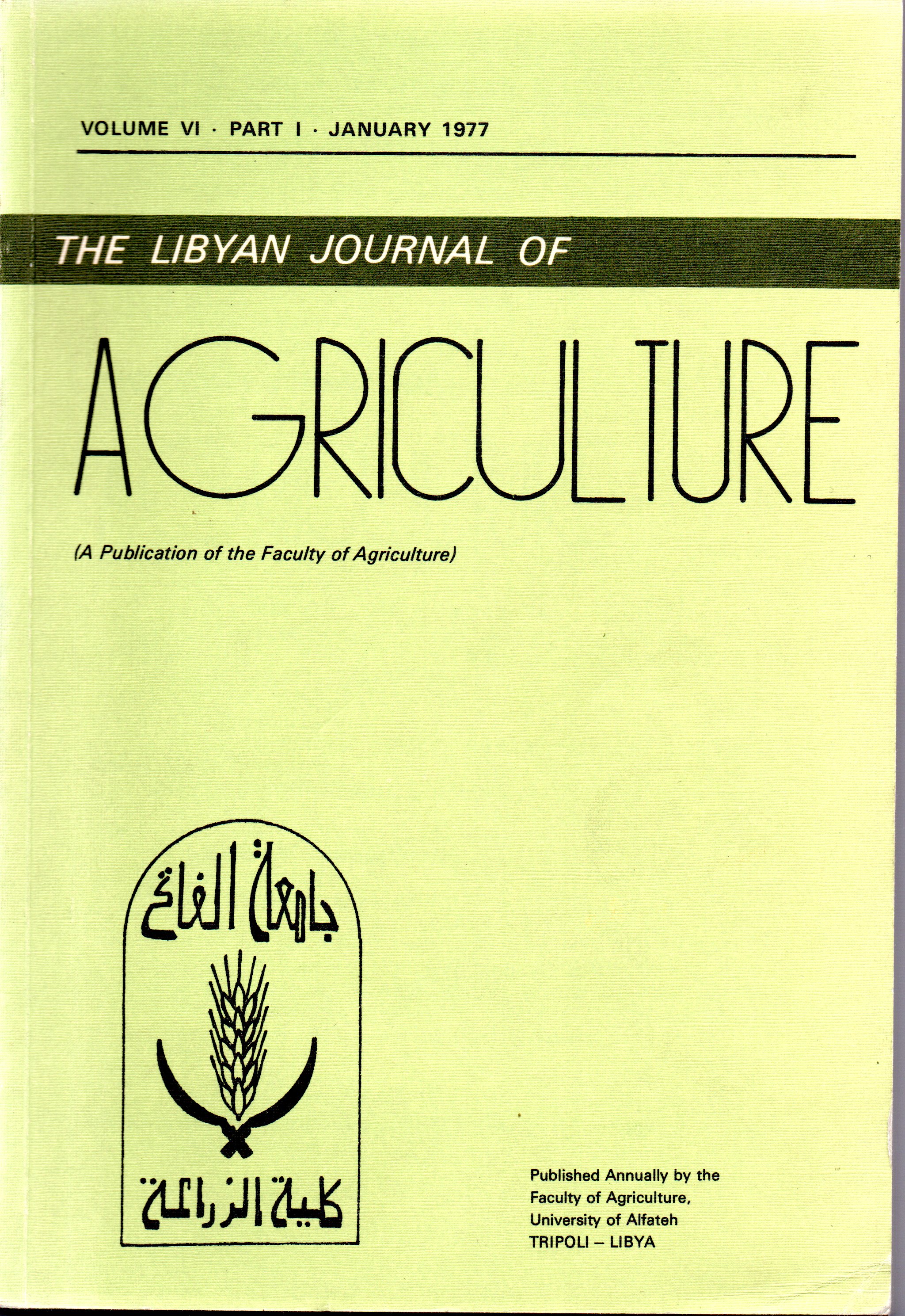Tolerance of Different Wheat Cultivars (Triticum SPP.) to Salinized Water
Main Article Content
Abstract
Relative salt tolerance of different wheat cultivars (Triticum aestivum and T. durum) was studied under the greenhouse conditions at the Faculty of Agriculture. Alfateh University. Tripoli, in 1975-1976.
Seedling emergence was delayed due to the increase in salinity of irrigation water during the first stage of emergence (7 days). However, no significant effect was noted due to salinity on the emergence percentage of the different wheat cultivars after this stage.
Although plant height at harvest in the wheat cultivars was not significantly affected by levels of salinity, spike length was reduced due to the increase in salinity level. The cultivars tested differed in stem and spike length. While Florence Aurora gave the tallest stems followed by Sidi Misri 1 and El-Badri, Sidi Misri 1 gave the longest spikes followed by Florence Aurora then El-Badri.
The average number of tillers and spikes per plant were decreased due to irrigation with salinized water. On the other hand, no significant effect of cultivars was exerted on both tillering and number of spikes per plant.
The total yield (grain plus straw), grain yield and straw yield were decreased by the increase of salinity level in irrigation water. The wheat cultivars were similar with respect to these measurements.
Although the harvest index (percentage grain to total yield) was not significantly affected by salinity level, the cultivars had a highly significant effect on it. Sidi Misri 1 gave a highly significant greater harvest index (30.39%) than either El-Badri or Florence Aurora which gave almost equal harvest index values (17.58 and 17.46%), respectively.
The number of grains per plant was decreased due to irrigation with salinized water. On the other hand, the number of grains per spike were not significantly affected by salinity. Sidi Misri 1 gave the maximum number of grains per plant, number of grains per spike, and grain weight per spike when compared with the other two cultivars.
Grain size was not affected by the salinity level up to 6,000 ppm, but it was highly significantly reduced with further increase in salinity. On the other hand, wheat cultivars gave comparable grain size.
It was concluded that the reduction in yield due to salinized water was attributed, mainly, to reduction in number of fertile tillers per plant.

